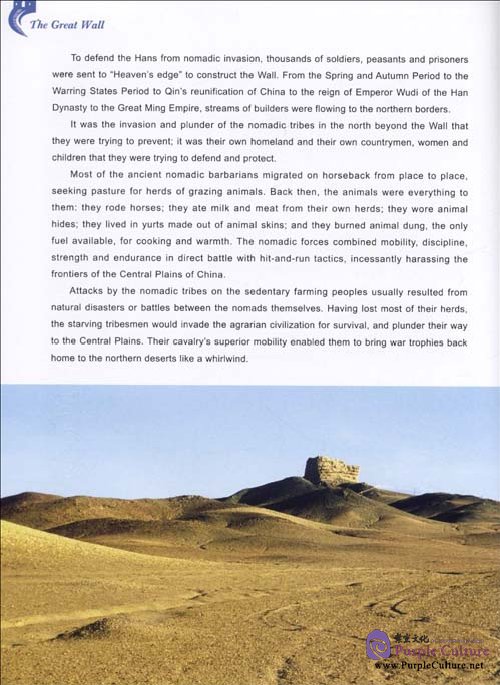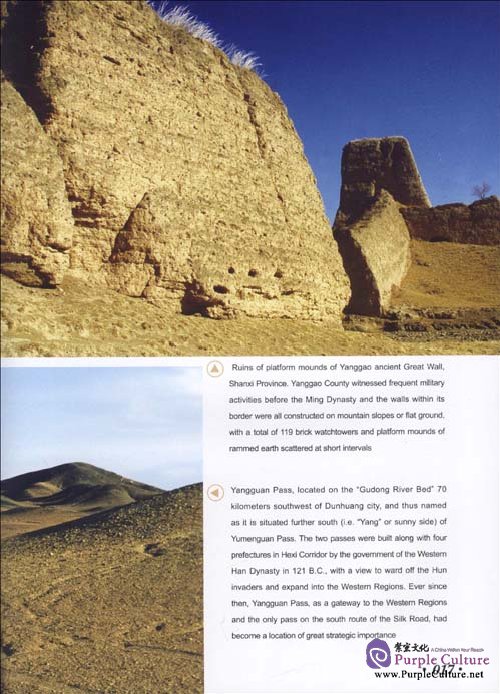Sample Pages Preview


To defend the Hans from nomadic invasion, thousands of soldiers, peasants and prisoners were sent to "Heaven's edge" to construct the Wall. From the Spring and Autumn Period to the Warring States Period to Qin's reunification of China to the reign of Emperor Wudi of the Han Dynasty to the Great Ming Empire, streams of builders were flowing to the northern borders.
It was the invasion and plunder of the nomadic tribes in the north beyond the Wall thatthey were trying to prevent; it was their own homeland and their own countrymen, women andchildren that they were trying to defend and protect.
Most of the ancient nomadic barbarians migrated on horseback from place to place,seeking pasture for herds of grazing animals. Back then, the animals were everything tothem: they rode horses; they ate milk and meat from their own herds; they wore animal hides; they lived in yurts made out of animal skins; and they burned animal dung, the onlyfuel available, for cooking and warmth. The nomadic forces combined mobility, discipline,strength and endurance in direct battle with hit-and-run tactics, incessantly harassing thefrontiers of the Central Plains of China.
Attacks by the nomadic tribes on the sedentary farming peoples usually resulted from natural disasters or battles between the nomads themselves. Having lost most of their herds,the starving tribesmen would invade the agrarian civilization for survival, and plunder their way to the Central Plains. Their cavalry's superior mobility enabled them to bring war trophies back home to the northern deserts like a whirlwind.

